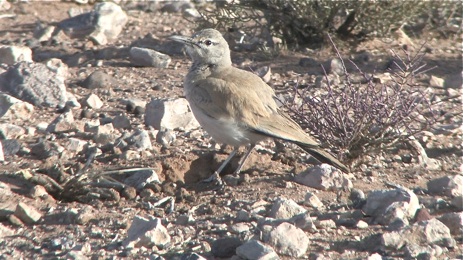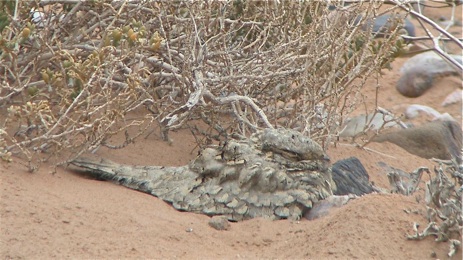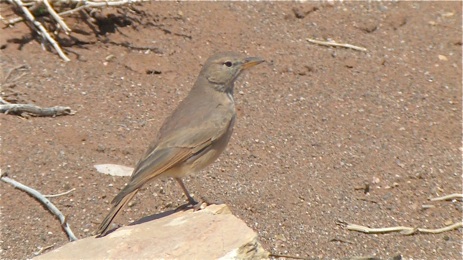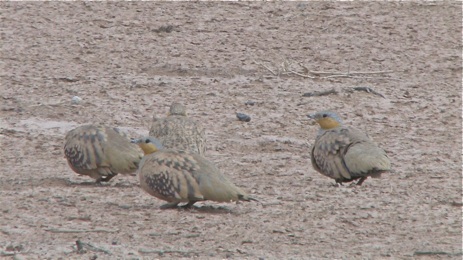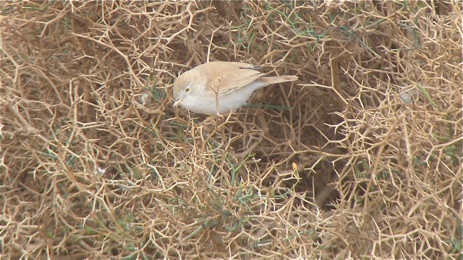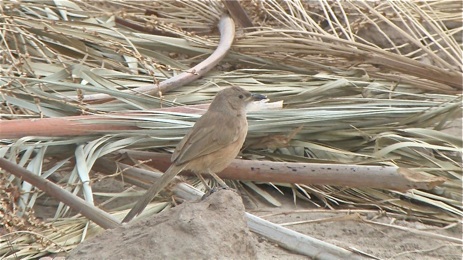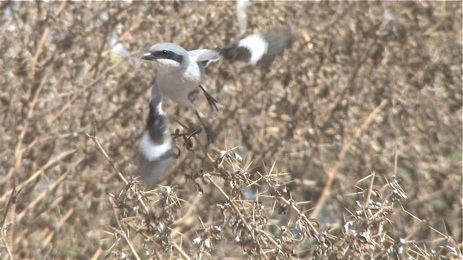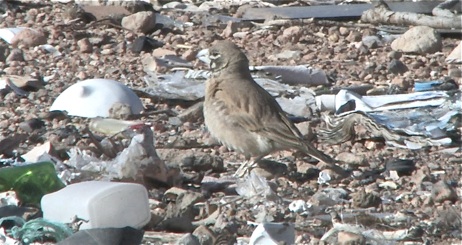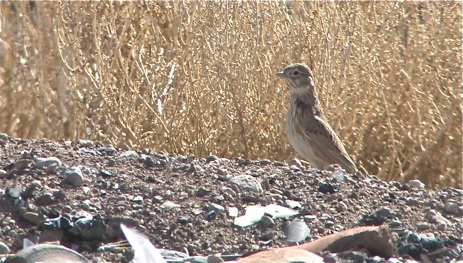Birds Near and Far
Home books dvds apps sites extra maps links contact us blog Buy
Birds Near and Far
Home books dvds apps sites extra maps links contact us blog Buy
A blog by Dave Gosney about some of the birds and places that feature in his books and DVDs but also about the state of birds in the Sheffield area

9th April 2014
More Moroccan birds
Before leading the Oriole Birding group around Morocco, I squeezed in a few days to myself, filming and reccying. Here are some freeze-frames from those days.
Hoopoe Larks use their curved bills to shovel out sand from pits that they dig in search of invertebrates
A nomad called Moubarak showed me this Egyptian Nightjar during the reccy, then another one in his garden when I revisited with the group.
The Collins Field Guide exaggerates how difficult it is to separate Desert Lark from Bar-tailed Lark. In the field Desert Lark is darker, more ruddy-brown with a much bigger, longer, yellow-based bill.
Spotted Sandgrouse. The three males at the front have spotted wing coverts but only the females (such as the one behind) have a spotted rump and chest
African Desert Warbler - sandier-looking than Asian Desert Warbler which looks greyer around the head and mantle
Up to 5 years ago several crews were failing to find Fulvous Babbler in Morocco but we had them at 3 locations this year (details in the Finding Birds app). This one was part of a troop at Rissani that suddenly fell silent. Seconds later a Booted Eagle skiffled over my shoulder and sort of hovered over where the babblers were, dangling its booted legs into the scrubby vegetation before flying off empty-handed.
Thekla Lark. You have to judge whether the bill is drooping (Crested Lark) or straight (Thekla Lark) but, as this picture shows, that’s not always easy.
Desert Grey Shrike (Lanius elegans elegans). The Collins Bird Guide shows Iberian Grey Shrike (L. meridionalis) as a separate species but the Dutch authorities have gone a stage further and ‘split’ the North African ‘Grey’ Shrikes as a separate species ‘Desert Grey Shrike’. This includes the Canaries race (L.e. koenigii) and the race found around the coastal parts of North Africa (L.e. algeriensis). This bird of the nominate desert race is paler below than algeriensis and has more white in the wing but note that it doesn’t have the white supercilium that elegans is supposed to show.
‘Maghreb Magpie’ is recognised by the Dutch as a separate species. Apart from the blue eye patch it is smaller with less white on the wing and belly and, to my eyes at least, less ‘gloss’ on the wings and, especially the tail.
Thick-billedLark is notoriously unpredictable in its occurrence so is difficult to guarantee. This year I found at least one on each of 4 visits i made to the town dump at Boumalne. You get nice close views but its hard to get a photo that isn’t also full of plastic.
Lesser Short-toed Larks were tricky to find at Boumalne this year. This one was at the town dump. it helps if you can pick out their buzzing call.
There’s a report of the Oriole Birding trip at www.oriolebirding.com
And one of the participants, Martyn Hnatiuk has posted some more photos on his blog
